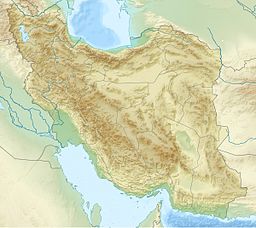| Sukkalmah dynasty Epartid dynasty | |
|---|---|
| Dynasty | |
A map of the Near East detailing the geopolitical situation in the region during the Sukkalmah dynasty c. 1600 BC occupied by various contemporaneous civilizations such as those of the:
A clickable map of Iran detailing cities that may have been occupied by the Elamites. | |
| Parent family | Shimashki dynasty |
| Country | Elam |
| Founded | c. 1980 BC |
| Founder | |
| Final ruler | Kutir-Nahhunte II (fl. c. 1710 – c. 1450 BC) |
| Final head | Siwe-Palar-Khuppak (r. c. 1778 – c. 1745 BC) |
| Historic seat | Susa |
| Titles | List
|
| Connected families | Awan dynasty |
| Dissolution | c. 1450 BC |
 |
| History of Greater Iran |
|---|
The Sukkalmah (c. 1900 – c. 1500 BC) or Epartid dynasty (named after the title sukkalmah used by many of the dynasty’s rulers; as well as, the eponymous founder Ebarat II/Eparti II),[1][2] was an early dynasty of West Asia in the ancient region of Elam, to the southeast of Babylonia. It corresponds to the third Paleo-Elamite period (dated to c. 1880 – c. 1450 BC). The Sukkalmah dynasty followed the Shimashki dynasty (c. 2200 – c. 1900 BC).[3][4] The title of Sukkalmah means "Grand Regent" and was used by some (but not all) Elamite rulers.[3] Numerous cuneiform documents and inscriptions remain from this period, particularly from the area of Susa, making the Sukkalmah period one of the best documented in Elamite history.[3]
- ^ Stolper, Matthew (1984). Elam: Surveys of Political History and Archaeology. University of California Press. p. 26.
- ^ Bryce, Trevor (2009). The Routledge Handbook of the Peoples and Places of Ancient Western Asia: The Near East from the Early Bronze Age to the fall of the Persian Empire. Routledge. p. 221. ISBN 9781134159079.
- ^ a b c Sigfried J. de Laet; Ahmad Hasan Dani (1994). History of Humanity: From the third millennium to the seventh century B.C. UNESCO. p. 579. ISBN 978-92-3-102811-3.
- ^ Álvarez-Mon, Javier; Basello, Gian Pietro; Wicks, Yasmina (2018). The Elamite World. Routledge. p. 289. ISBN 9781317329831.

